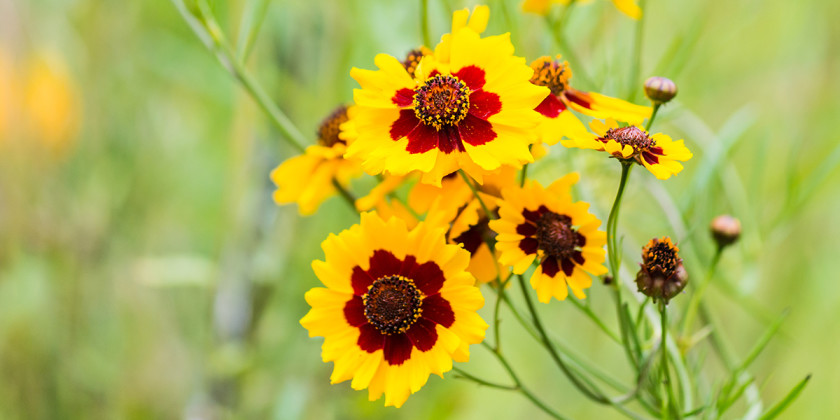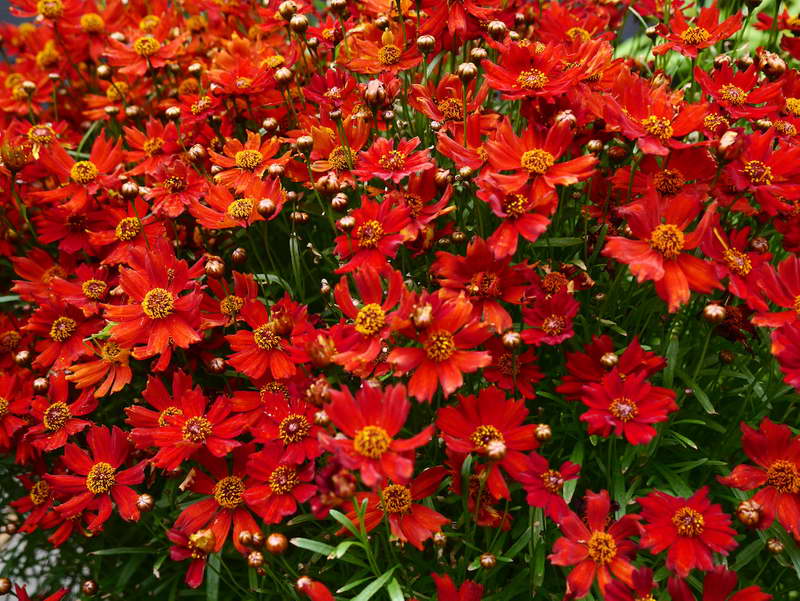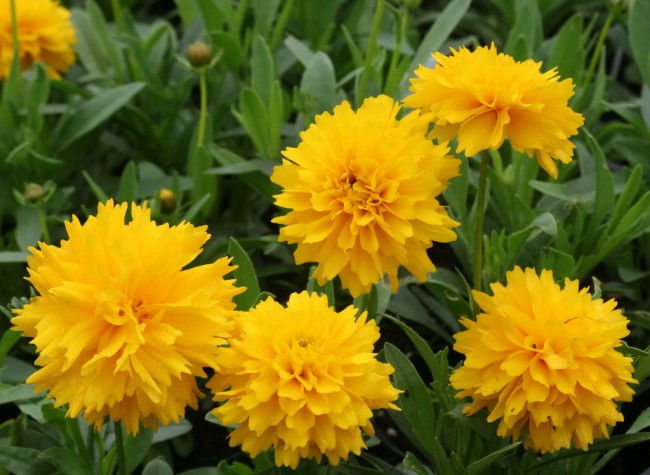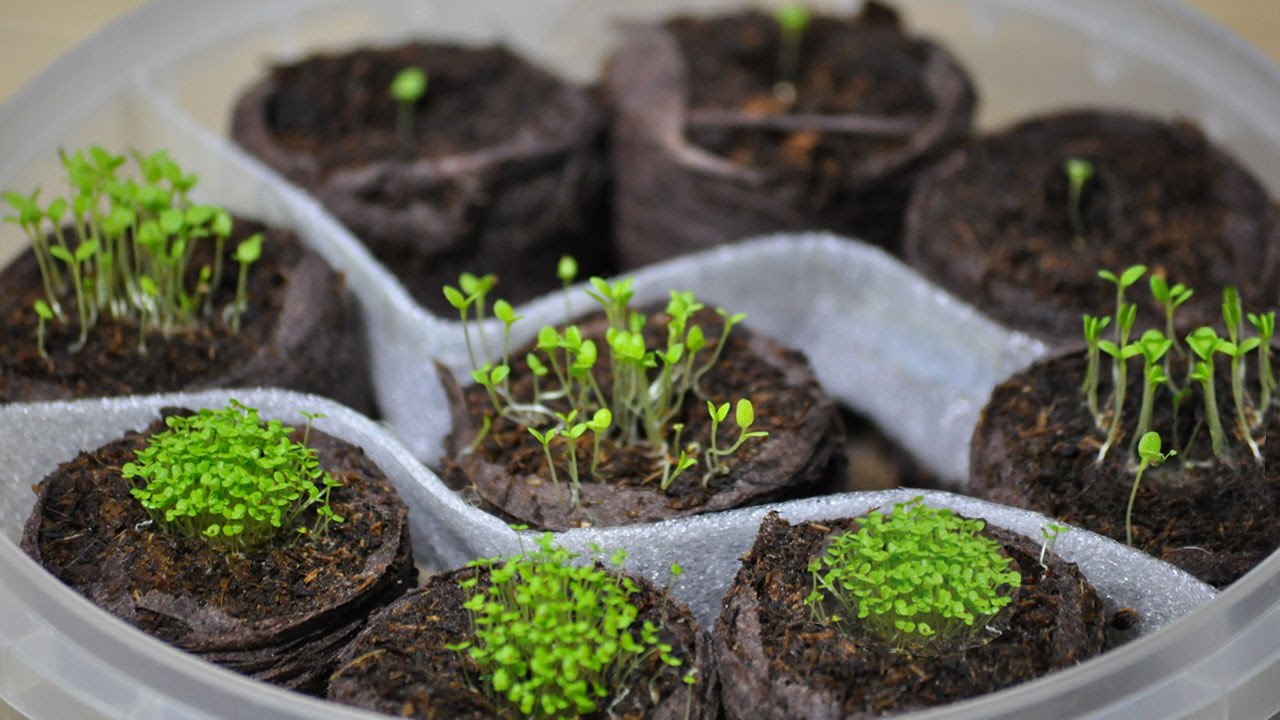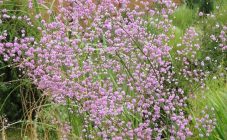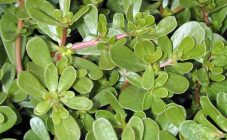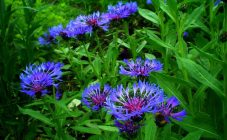Content:
Coreopsis yellow is a perennial plant that adorns many domestic household plots. Thanks to its rich yellow color, the flower transforms flower beds from mid-summer until the first frost. Distributed due to unpretentiousness in care and reproduction. Growing a perennial is the best idea to decorate the site for the whole summer.
Characteristics and description of the culture
The sun flower belongs to perennials, belongs to the Asteraceae family, or Asteraceae. The species is conditionally divided into two large groups: perennial and annual, but the first are the most common.
Perennial flower description:
- In the vast majority of cases, a perennial is a herbaceous plant, but sometimes shrub and semi-shrub forms are found.
- The stems are branched, but erect. Their height can vary between 20 cm - 1 m. Thanks to this, the culture is actively used in landscape design.
- The root system is whorled. The plant can reproduce vegetatively and by seed.
- The stem is densely leafy and, depending on the location of the foliage, has individual characteristics. The basal leaf plates are entire, and the stem plates can be finger-like or pinnately-divided. They are formed oppositely.
- The foliage can vary in color from light green to dark green.
- Inflorescences tend to form into single baskets, the diameter of which is 8 cm. The surface of the inflorescences, depending on the variety, can be simple or double.
- Flowers can be of different colors, for example, brown, yellow, purple, red or pink. The petals are pointed at the ends, like rays, therefore this flower is called solar.
- Flowering under favorable weather conditions and observance of the rules of agricultural technology begins in the third decade of June and lasts until the onset of the first cold weather.
Varieties and varieties
Today in nature there are about 120 varieties of coreopsis, of which no more than 30 are cultivated. In the conditions of Central Russia, most often they are planted in open ground:
- Coreopsis Dyeing Amulet. It differs from its congeners by its rich red-brown color, sometimes yellow veins are noted on the petals. Subject to agrotechnical rules and favorable weather conditions, it begins to bloom magnificently from mid-July, and ends at the end of September.
- Large-flowered coreopsis is perhaps the most sought-after and widespread species in the world. Flowers are characterized by a variety of shapes and colors, each can reach 8 cm in diameter. Bushes are formed high up to 100 cm. Unfortunately, the plant has a significant drawback - a short life span, no more than 2-3 years.
- Coreopsis Golden Ball is a perennial one, planting and caring for which is not difficult even for beginners - an equally popular variety. Compared to other species, the plant is miniature. The surface of the inflorescences is bright yellow and double. Visually, the inflorescences resemble bright daisies. Under favorable weather conditions, flowering is lush and long, until the end of September.
Perennial coreopsis: planting and care
The plant can be planted in several ways, which significantly increases the coreopsis population in domestic gardens. Among flower growers, it is customary to plant crops as follows:
- Vegetative method, or, as it is also called, dividing the bush. This is the simplest and at the same time reliable breeding option, carried out by dividing the rhizome. The most optimal time for the procedure is the beginning of spring, when the surface of the soil has already thawed and warmed up a little. The near-stem circle must first be loosened, then carefully, without damaging the root system, dig out the bush. Using a sharp knife, divide the root in such a way that at least 2-3 buds remain on each part. Each piece needs to be dug on the same day.
- With the arrival of summer, you can propagate the plant by cuttings. To do this, in June-July, healthy shoots are cut 10 cm below the internodes and planted in previously prepared containers. Leaves must be removed from the bottom of the cutting. Using this method, the flower takes root quickly.
- And another fairly common method is seed. To grow a healthy bush, you need to use high-quality planting material.
Perennial coreopsis care
Taking care of a perennial plant is not difficult at all. Basic agrotechnical rules:
- The culture tolerates short-term drought well, so there is often no need to water the plants. Coreopsis only needs abundant watering in an excessively sultry heat.
- Top dressing is needed for bushes only if they are grown on poor soils. The optimal time for the procedure is late spring. It is best to use universal mineral water-soluble complexes.
- To prolong flowering, it is recommended to regularly and promptly remove wilting inflorescences, as well as seed pods.
- Tall varieties need a garter. The support will prevent the collapse of the bush and lodging during adverse weather conditions.
- The plant grows and develops extremely quickly, therefore, in order to exclude its degeneration, it is required to divide the bushes with an interval of 3-4 years and replant to a new place.
Coreopsis is a sunny plant that creates an amazing atmosphere in a flower garden. It is not difficult to grow it, it is enough to familiarize yourself with the above features of planting and care.
